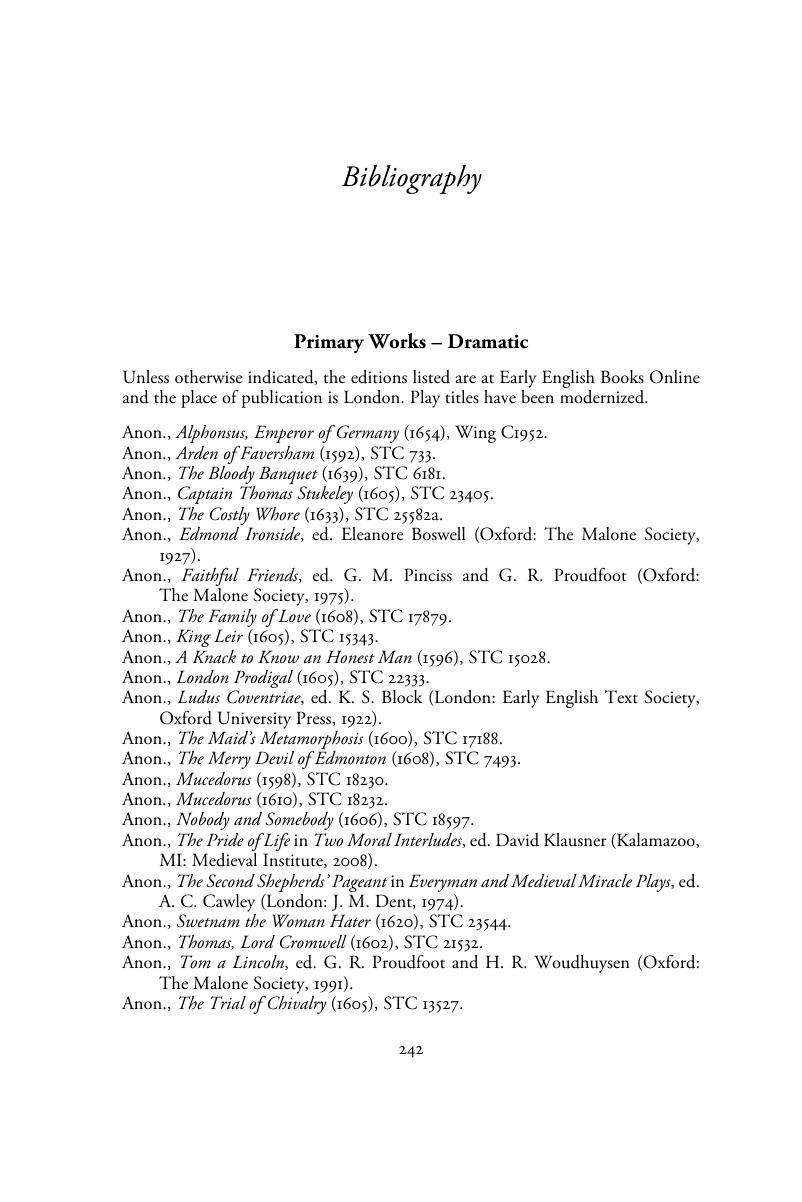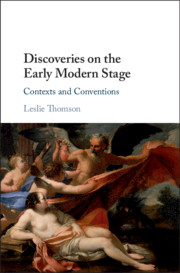Book contents
- Discoveries on the Early Modern Stage
- Discoveries on the Early Modern Stage
- Copyright page
- Dedication
- Contents
- Figures
- Acknowledgements
- Introduction
- Chapter 1 Kinds and Uses
- Chapter 2 Time and Truth
- Chapter 3 Religious Rites and Secular Spectacle
- Chapter 4 Revelation and Belief
- Chapter 5 Private Places and Hidden Spaces
- Chapter 6 Invention and Artifice
- Appendix Was There a Central Opening in the Tiring House Wall?
- Bibliography
- Index
- References
Bibliography
Published online by Cambridge University Press: 18 July 2018
- Discoveries on the Early Modern Stage
- Discoveries on the Early Modern Stage
- Copyright page
- Dedication
- Contents
- Figures
- Acknowledgements
- Introduction
- Chapter 1 Kinds and Uses
- Chapter 2 Time and Truth
- Chapter 3 Religious Rites and Secular Spectacle
- Chapter 4 Revelation and Belief
- Chapter 5 Private Places and Hidden Spaces
- Chapter 6 Invention and Artifice
- Appendix Was There a Central Opening in the Tiring House Wall?
- Bibliography
- Index
- References
Summary

- Type
- Chapter
- Information
- Discoveries on the Early Modern StageContexts and Conventions, pp. 242 - 257Publisher: Cambridge University PressPrint publication year: 2018

